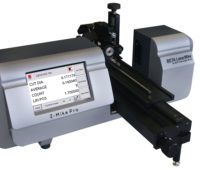As the 20th century came to a close, U.S. manufacturers realized the need to transform thinking from the product to the system. Manufacturers were no doubt exhausted from having to spot a defect along the process and either scrap the product or send it back into the process for rework. It made economic sense to begin considering the system. If the company assures its customers the product will be produced without error, the company saves on rework and parts. Manufacturers began speaking in terms of quality assurance, not control. (In 1997, the American Society for Quality Control became the American Society for Quality. It was the year we “lost control.”)
Plan-Do-Check-ActMaking Sure the System Is Part of the Product The following description can be found on the ASQ Knowledge Center website (http://asq.org/learn-about-quality/project-planning-tools/overview/pdca-cycle.html). The plan-do-check-act (PDCA) cycle is a four-step model for carrying out change. Just as a circle has no end, the PDCA cycle should be repeated again and again for continuous improvement. When to Use Plan-Do-Check-Act As a model for continuous improvement When starting a new improvement project When developing a new or improved design of a process, product or service When defining a repetitive work process When planning data collection and analysis to verify and prioritize problems or root causes When implementing any change |
A recent post on DifferenceBetween.com (www.differencebetween.com/difference-between-quality-assurance-and-vs-quality-control/) described the interdependence of these terms. “The most notable difference between quality assurance and quality control is that while QC is product oriented, QA is process oriented.” That sentence differentiates the two terms concisely. The article concludes with, “However, both QC and QA are highly interdependent. The QA department relies largely on the feedback it receives from the QC department. If there are any problems, the same are conveyed by QC department to QA department which makes suitable changes in the process so as to avoid these problems in future.”
Within the realm of spotting and reducing defects come the terms correction and corrective action. If quality is about finding defects in products and reducing the occurrence of them in the processes, correction and corrective action certainly have their parts to play. However, like quality control and quality assurance, people often confuse the meaning of these two terms.
Govind Ramu, in an “Ask the Experts” column of Quality Progress (August 2014), explains correction as “an action taken to eliminate a detected nonconformity.” On the other hand, corrective action is “taken to eliminate the cause of the detected nonconformity. This requires understanding the root cause of the detected nonconformity and taking action to eliminate the root cause(s).” To stress the interdependency of these two activities, Ramu explains that, “correction and corrective action may be required in many scenarios.”
Whether discussing control or assurance, correction or corrective, your business cannot afford to view your products and your processes independently. Yet, many companies still refuse to take the steps needed to fully integrate quality throughout the company. Because resources are involved, organizations will hope for the best without preparing for the worst. This is shortsighted, to say the least.
Members of the quality community need to make sure they do not contribute to the confusion. Help clarify quality terminology for executives and nonquality people alike. If need be, begin speaking in terms of continuous improvement and the tools needed to set that in motion and continue having an impact within your business. (see Plan-Do-Check-Act sidebar)
Control and assurance, correction and corrective, and continuous improvement. Be sure to plan what you need to do, check your thoughts, and act appropriately to the data.

